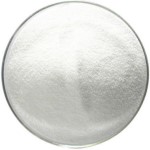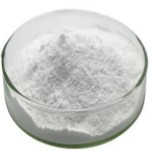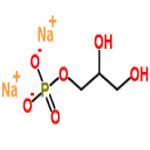Sodium Gluconate USP FCC Food Grade & Hydrated Sodium Glycerophosphate BP Ph Eur Suppliers Exporters, Manufacturers
Sodium Gluconate
CAS Number: 527-07-1 USP FCC Food Grade Suppliers Exporters, Manufacturers

Please visit Safety Data Sheet of Sodium Gluconate USP FCC Food Grade Manufacturers.
Sodium Gluconate FCC Food Grade Specifications
Sodium D-Gluconate
CH2OH(CHOH)4COONa
C6H11NaO7 Formula weight 218.14
CAS 527-07-1
DESCRIPTION
Sodium Gluconate occurs as a white to tan, granular to fine, crystalline powder. It is very soluble in water, and is sparingly soluble in alcohol. It is insoluble in ether.
Function: Nutrient; sequestrant.
REQUIREMENTS
Identification:
A. A 1:20 aqueous solution gives positive tests for Sodium.
B. Dissolve a quantity of sample in water, heating in a water bath at 60° if necessary, to obtain a Test Solution containing 10 mg/mL. Similarly, prepare a Standard Solution of USP Potassium Gluconate Reference Standard in water, diluting to 10 mg/mL. Apply separate 5-L portions of the Test Solution and the Standard Solution on a suitable thin-layer chromatographic plate coated with a 0.25-mm layer of chromatographic silica gel, and allow to dry. Develop the chromatogram in a solvent system consisting of a mixture of alcohol, water, ammonium hydroxide, and ethyl acetate (50:30:10:10) until the solvent front has moved about three-fourths of the length of the plate. Remove the plate from the chamber, and dry at 110C for 20 min. Allow to cool, and spray with a spray reagent prepared as follows: Dissolve 2.5 g of ammonium molybdate in about 50 mL of 2 N sulfuric acid in a 100-mL volumetric flask, add 1.0 g of ceric sulfate, swirl to dissolve, dilute to volume with 2 N sulfuric acid, and mix. After spraying, heat the plate at 110C for about 10 min. The principal spot obtained from the Test Solution corresponds in color, size, and Rf value to that obtained from the Standard Solution.
Assay: Not less than 98.0% and not more than 102.0% of C6H11NaO7.
Lead: Not more than 2 mg/kg.
Reducing Substances: Not more than 0.5%, calculated as D-glucose.
Sodium Gluconate USP Grade Specifications
C6H11NaO7 -- 218.14
d-Gluconic acid, monosodium salt.
Monosodium d-gluconate CAS 527-07-1.
Sodium Gluconate contains not less than 98.0 percent and not more than 102.0 percent of C6H11NaO7.
Identification:
A: A solution (1 in 20) responds to the tests for Sodium.
B: It responds to Identification test B under Calcium Gluconate.
Chloride: A 1.0-g portion shows no more chloride than corresponds to 1 mL of 0.020 N hydrochloric acid (0.07%).
Sulfate: A 2.0-g portion dissolved in boiling water shows no more sulfate than corresponds to 1 mL of 0.020 N sulfuric acid (0.05%).
Lead: Dissolve 1.0 g in 25 mL of water: the limit is 0.001%.
Heavy metals: Dissolve 1.0 g in 10 mL of water, add 6 mL of 3 N hydrochloric acid, and dilute with water to 25 mL: the limit is 0.002%.
Reducing substances: Transfer 1.0 g to a 250-mL conical flask, dissolve in 10 mL of water, and add 25 mL of alkaline cupric citrate TS. Cover the flask, boil gently for 5 minutes, accurately timed, and cool rapidly to room temperature. Add 25 mL of 0.6 N acetic acid, 10.0 mL of 0.1 N iodine VS, and 10 mL of 3 N hydrochloric acid, and titrate with 0.1 N sodium thiosulfate VS, adding 3 mL of starch TS as the endpoint is approached. Perform a blank determination, omitting the specimen, and note the difference in volumes required. Each mL of the difference in volume of 0.1 N sodium thiosulfate consumed is equivalent to 2.7 mg of reducing substances (as dextrose): the limit is 0.5%.

Please visit Hazard Statement of Sodium Gluconate USP FCC Food Grade Suppliers.
Hydrated Sodium Glycerophosphate
CAS Number: 1334-74-3 or 55073-41-1 or 154804-51-0 BP Ph Eur Suppliers Exporters, Manufacturers

Please visit Safety Data Sheet of Hydrated Sodium Glycerophosphate BP Ph Eur Manufacturers.
Hydrated Sodium Glycerophosphate BP Grade
Ph Eur
C3H7Na2O6P-xH2O -- 216.0 (anhydrous substance)
DEFINITION
Mixture of variable proportions of sodium (2RS)-2,3-dihydroxypropyl phosphate and sodium 2-hydroxy-1-(hydroxymethyl)ethyl phosphate. The degree of hydration is 4 to 6.
Content: 98.0 per cent to 102.0 per cent (anhydrous substance).
CHARACTERS
Appearance: White or almost white, crystalline powder or crystals.
Solubility: Freely soluble in water, practically insoluble in acetone and in alcohol.
IDENTIFICATION
A. Solution S (see Tests) gives reaction (a) of sodium.
B. To 0.1 g add 5 ml of dilute nitric acid R. Heat to boiling and boil for 1 min. Cool. The solution gives reaction (b) of phosphates.
C. In a test-tube fitted with a glass tube, mix 0.1 g with 5 g of potassium hydrogen sulphate. Heat strongly and direct the white vapour into 5 ml of decolorised fuchsin solution. A violet-red colour develops which becomesmviolet upon heating for 30 min on a water-bath.
TESTS
Solution S: Dissolve 10.0 g in carbon dioxide-free water prepared from distilled water and dilute to 100 ml with the same solvent.
Appearance of solution: Solution S is not more opalescent than reference suspension II and not more intensely coloured than reference solution.
Alkalinity: To 10 ml of solution S add 0.2 ml of phph solution. Not more than 1.0 ml of 0.1 M hydrochloric acid is required to change the colour of the indicator.
Glycerol and alcohol-soluble substances: Maximum 1.0 per cent.
Shake 1.000 g with 25 ml of alcohol for 10 min. Filter. Evaporate the filtrate on a water-bath and dry the residue at 70C for 1 h. The residue weighs not more than 10 mg.
Chlorides: Maximum 200 ppm.
Phosphates: Maximum 0.1 per cent.
Sulphates: Maximum 500 ppm.
Iron: Maximum 20 ppm.
Heavy metals: Maximum 20 ppm.
Water: 25.0 per cent to 35.0 per cent, determined on 0.100 g.

Please visit Hazard Statement of Hydrated Sodium Glycerophosphate BP Ph Eur Suppliers.
Sodium Gluconate CAS Number 527-07-1 & Hydrated Sodium Glycerophosphate CAS Number 1334-74-3 or 55073-41-1 or 154804-51-0 Supplier Exporter, Manufacturer:
Annie Chemie P Ltd
Mumbai 4000010, INDIA
With Agents and offices in UAE, USA, Europe.
e-mail: info@anniechemie.com
Copyright and Usual Disclaimer is Applicable.
June 2, 2025
Exporters to USA, Canada, UK, Europe, UAE, Nigeria, Algeria, Turkey, Mexico, Brazil, Chile, Argentina, Australia, Dubai etc.
Perfection is made up of small things and that is a big thing.
